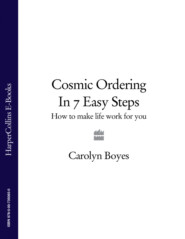По всем вопросам обращайтесь на: info@litportal.ru
(©) 2003-2024.
✖
NLP
Автор
Год написания книги
2019
Настройки чтения
Размер шрифта
Высота строк
Поля
1.6 Identify your business values (#ulink_87d3e846-09a5-5d3a-ad5b-c39250d0235e)
What’s important to you in business? What would make you stay in a job? What draws you to particular groups of people or a particular political cause? Is there anything that would make you uncomfortable ethically in business? What do you have in common with the people you get on with at work?
Our values are such an important part of our internal world that they pull us towards or away from situations and people throughout our lives. They are first formed in childhood, and influenced by family and friends. We may change our values according to experience as we grow older. But some values are so deeply held that we may be reluctant to change them and would rather leave a situation and uphold our values rather than compromise them.
• A value is anything that is important to you. Stop and ask yourself: What’s important to me about my job? The people I work with? My goals? Working for a great boss? Business? Values might include, for example, happiness, friendship, joy, learning, challenge, success. Whatever words you come up with are the right ones for you.
one minute wonder Ask yourself, “What do I value in my work life right now?” Write down a list of what comes to mind. Keep pushing yourself to get to the really deep values. Ask “and what else?” Then, “What would make me give up this work or leave this job?” See what values are uncovered.
Often the deep values don’t come to mind immediately, but they’re the ones that really matter when important decisions have to be made. If you have ever felt forced to leave a job or come out of a relationship, think about what made you do it. Which value was lacking or wrong in the situation you came out of? Or which value did you want more of? These are the most important values to you.
By identifying your values in different parts of your life you will learn a lot about your subconscious motivations. You will discover what guides you to success and what may block you from time to time. When you have an outcome you think you want to achieve, but you keep sabotaging your success, it’s always worth examining your values. It could be that you have two values that are clashing – motivating you in two contradictory directions. By identifying this, you have the opportunity to do something about it.
Identify what’s important to you at work so you know where to put your focus and effort for the future.
1.7 Be observant (#ulink_a7f3b456-157c-5338-b5e5-cfffa215869d)
NLP has a term called sensory acuity. This is the ability to be highly observant. The more you notice in your world, the more you can fine-tune your actions and responses to fit situations in the most appropriate ways. This will in turn help you to achieve your goals.
The secret is to be observant of everything:
1 Notice what is happening with other people. Learn to notice changes in their behaviour, their communication and gradually to their subconscious body language.
one minute wonder Assuming that something has to be done or should be done limits choice and flexibility. A good way to counteract this is to acknowledge that there are always choices in any given situation. This puts you at the cause rather than the effect of any situation. Looking for choices and possibilities means that you will focus on the future and take responsibility for your success.
“All our dreams can come true, if we have the courage to pursue them” Walt Disney, American film producer
2 Become aware of your own behaviour and communication. Notice how you respond to events and circumstances. Become aware of what triggers different responses in you.
3 Become highly aware of what is going on inside your head. What are you thinking and feeling? What happens in the world when you change what you think and feel?
You will probably begin to notice changes in the way people look and how they sound. You may also begin to notice differences in the way you feel and the sounds and pictures you have in your head. In the next set of secrets you will learn how to explore your internal communication in more detail.
As you become more tuned into your ability to be observant, you may notice that this gives you greater ability to be flexible in your behaviour. The proof of your success will be in the quality of each outcome you achieve. Practise using your sensory acuity each day and see what results you achieve.
Fine-tune your sensory acuity and observe what you think and feel in different circumstances.
Focus on your outcomes (#ulink_88d4ee13-406b-527e-84e7-2898908b25c1)
Some people have a vague idea of what they want. Some just drift. However, to get results in business, whether day-to-day or over a 10-year period or more, you need to have a clear vision of what you want to achieve. In NLP, the term ‘outcome’ is often used for what you define as the positive consequences of your actions. ‘Outcomes’ are more than just about setting yourself some goals, they are about understanding what it takes to achieve them.
2.1 Have well-formed visions (#ulink_c305e8cd-8a95-5447-9c7a-08553ec75117)
What results do you want? Do you have a clear picture in your head of what you want to achieve? Or are you someone who has a confused picture that keeps changing, or a picture of what you don’t want, or barely any picture at all, just vague ideas? Which vision will achieve most?
People often wonder why they aren’t successful. The real question is, are they successful in getting the result they really want or a result they hadn’t planned and don’t like?
The outcome you want can only happen when you have a well-formed vision of it. Once you’ve got a clear picture you’ll be able to take the necessary steps to achieve it.
This is how to do it. Think of something you want to have, to be or to do in your life. Now ask these questions:
1 Is it positive? Focus on what you want, not what you don’t want. (Otherwise, your internal picture will be of what you want to avoid and ironically that’s probably what you’ll end up with).
“If what you are doing is not moving you towards your goals, then it’s moving you away from your goals” Brian Tracy, performance coach
2 Is it specific? The more specific it is, the easier it’ll be to focus on and you’ll find it easier to know when you are near or far away from your goal.
3 What is my evidence? How will I know when I have it? What will it look like? What will it feel like? If you don’t have evidence you won’t know when you have achieved your result.
4 Who is in charge of this outcome? The answer has to be you, because an outcome dependent on others isn’t achievable by you.
5 Is this good for you? Will getting this result be good for you and your world as a whole? Consider the effect on you, others around you and your life.
6 What resources do you have and need? Consider where you are in relation to your desired outcome. What do you have available to achieve this and what do you need to acquire?
Make sure that you build clear pictures in your mind of what you want to achieve.
2.2 Don’t just try…DO it (#ulink_1445454f-b3f0-517a-ad71-7c68f9a898bf)
“That’s a great idea. I’ll really try to take it on board.” “I will try to meet you at 3pm. I know I didn’t make the meeting last time but I will really make sure I try to get there in time for it today.” “I am trying you know. I am really, really trying.”
• ‘Trying’ means two things. In English the word ‘trying’ has two meanings: to attempt to do something, or to be a little upsetting, difficult or annoying.
Well, people who are always trying to do things can end up being extremely annoying to everyone else (and often themselves as well by the way). This is because they tend to let people down.
one minute wonder If you have any doubts about whether you really want the goals you are seeking, ask these questions: What will happen when you have it? What will happen if you don’t have it? What won’t happen when you have it? What won’t happen if you don’t have it? What are the benefits of not having it? What are the drawbacks of having it?
“Action is the foundational key to all success” Pablo Picasso, pioneering modern artist
• ‘Try’ often implies failure. There is a big difference between saying “I will get to the meeting by 3pm” and “I will try to get to the meeting by 3pm”. Somehow we all know that the first person will only fail to get to the meeting under exceptional circumstances, but the second person will probably turn up late or perhaps not even make it at all.
There’s also a big difference between saying “I will try to achieve what I have set out in my well-formed outcome in this area of my life” and “I will just do it. I will do what it takes to achieve this result. Maybe I am not clear exactly how I will do it yet but I will learn as I go along.”
• Back to cause and effect. Are you going to try to take responsibility for the results you get? Or are you going to take responsibility for the results you get? Are you going to try to lose weight…again? Or are you going to lose weight? Are you going to try to get a good relationship with your boss and grumble when you don’t, or are you going to achieve that good relationship?
When you stop trying, that’s when you really do start using whatever happens to you as feedback and take infinitely flexible actions to achieve your well-formed vision of success.
‘Trying’ implies failure, so leave out this word when defining your business goals.
2.3 Commit and take action (#ulink_45010117-a8ce-5d2e-a687-094ea8fb6336)
Lots of people want things. They want to have more success. They want to have more possessions. They want to have less stress. They want to have happier days, a bigger business, less debt, more money, more skills…The list goes on and on.
But a want is just a want. A want is meaningless in terms of achievement if you don’t first turn it into a specific goal – or projected outcome – and then take action to get it.
• What are you going to begin with right now to get what you want?
Your well-formed goals all need to start with a first step that turns into a second step and a third and a fourth and so on until you achieve what you set out to achieve.










